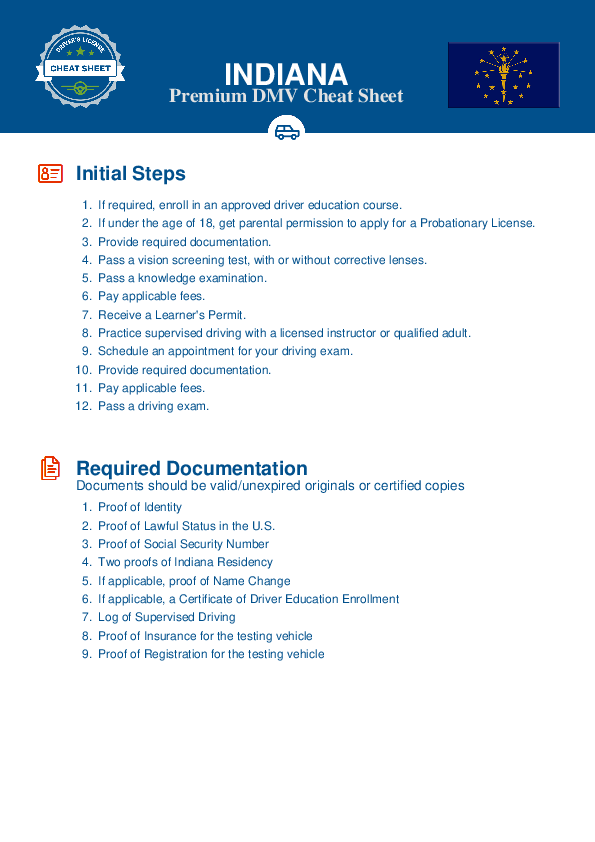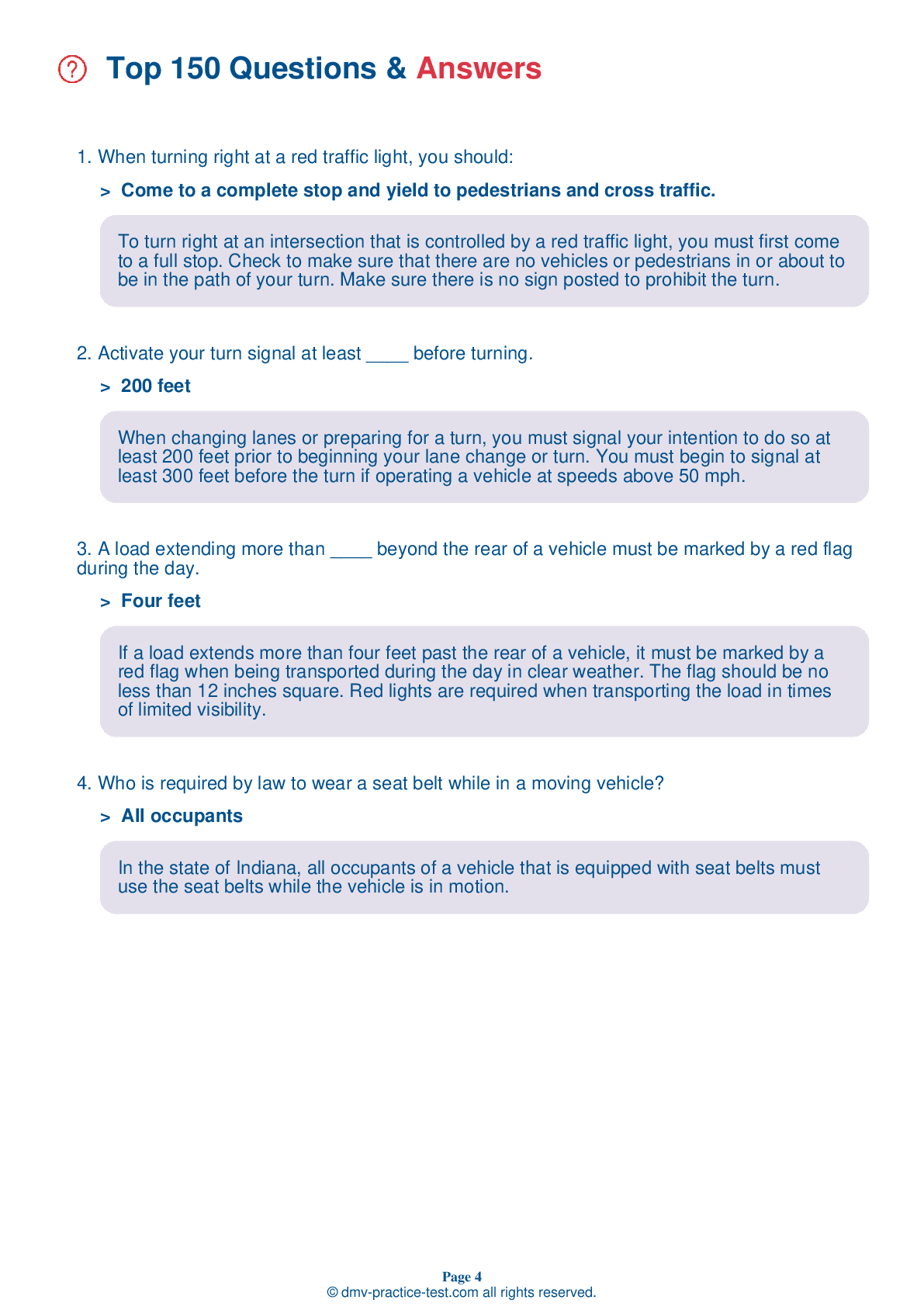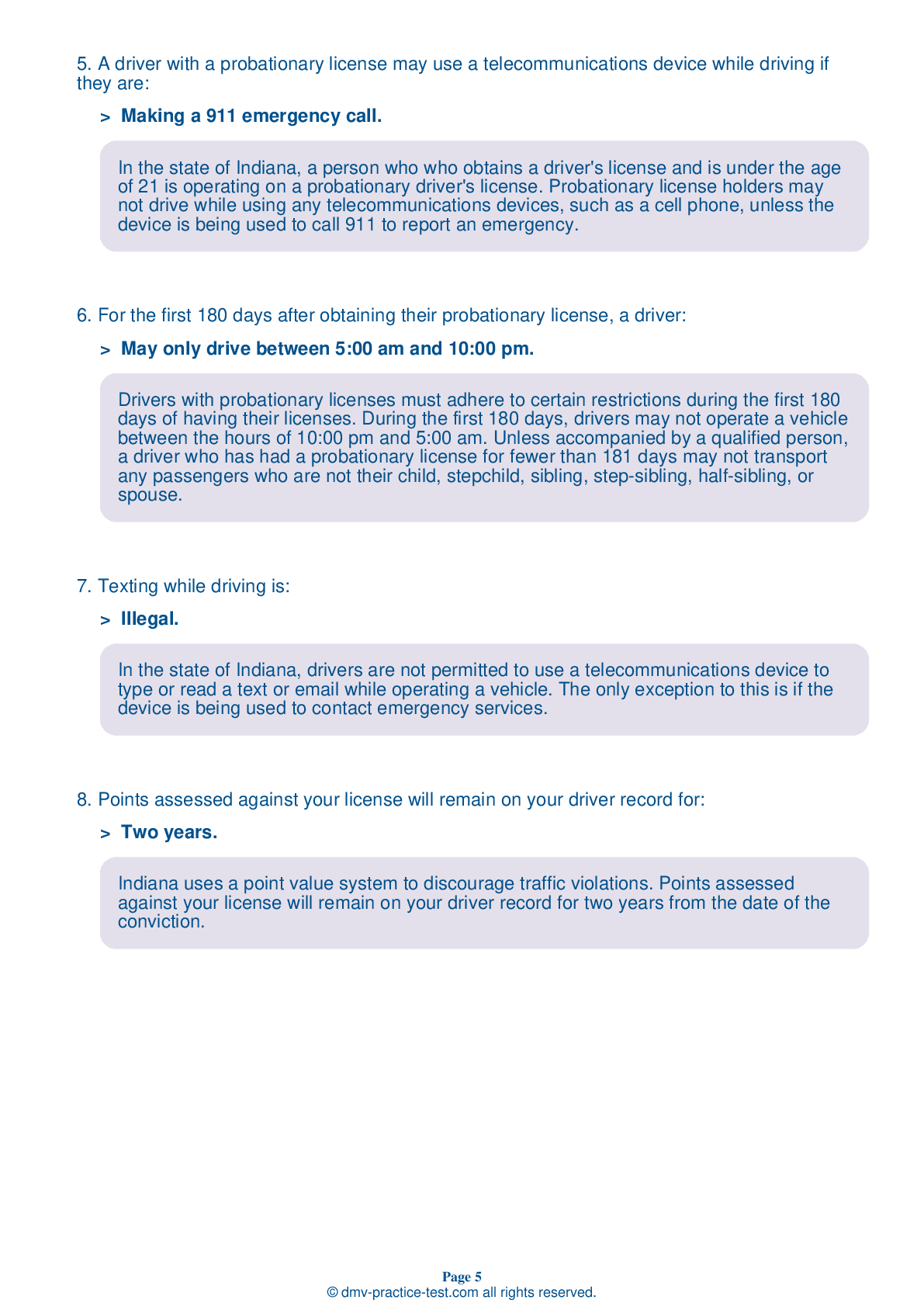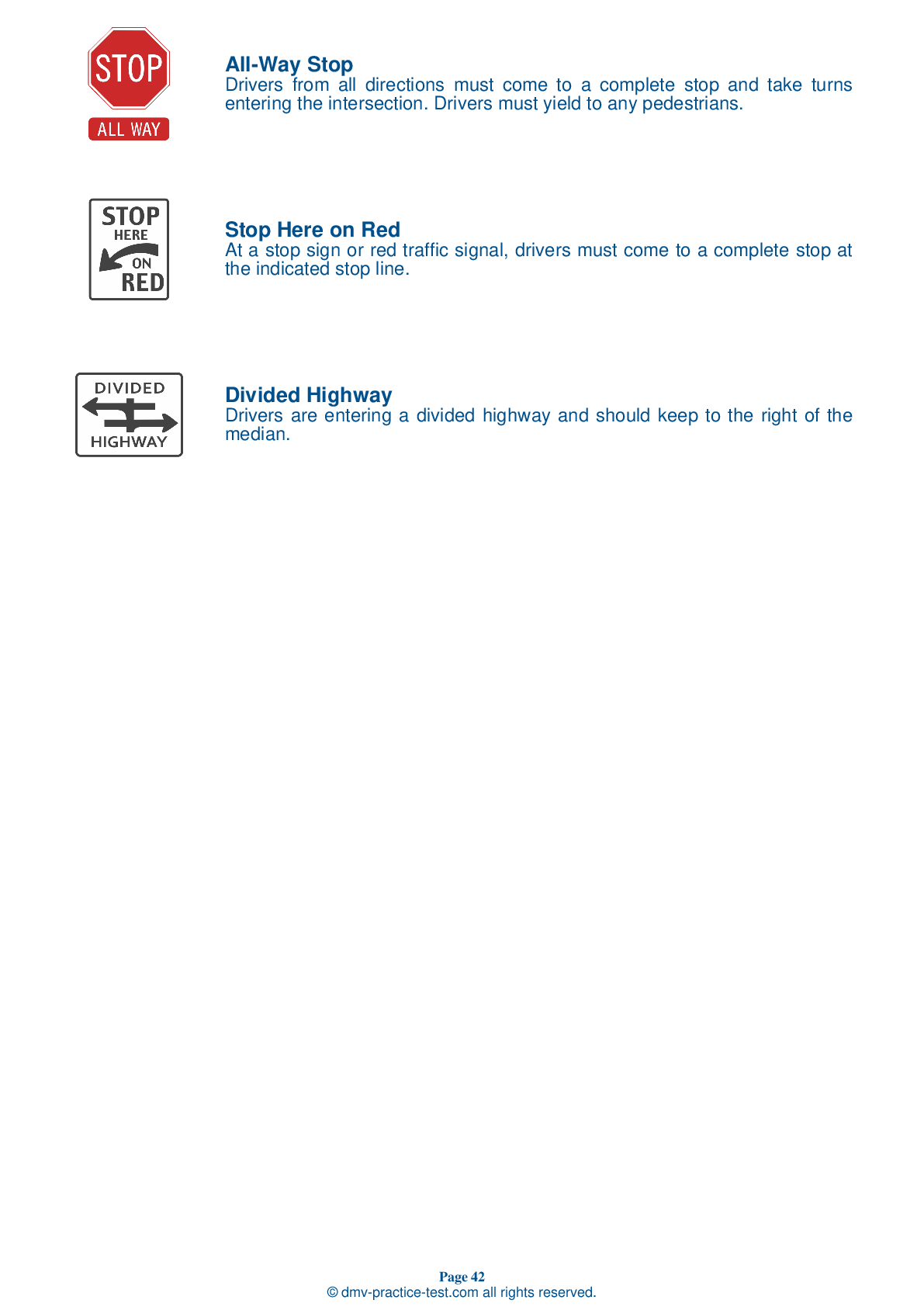FREE Indiana DMV Practice Test #2 Page 5 of 5
This set of Indiana DMV practise tests has been updated for January 2025. It includes questions based on the Indiana Driver Handbook's most significant traffic signals and laws for 2025. Use actual questions that are very similar (often identical!) to the DMV driving permit test and driver's licence exam to study for the DMV driving permit test and driver's licence exam.
On the practise exam, each question gets a tip and explanation to help you remember the concepts. The written component of the official Indiana DMV test will include questions about traffic rules, traffic signs, and driving statutes, as well as information from the Driver Handbook.
To obtain a passing grade, you must correctly answer 44 of the 50 questions. Take our DMV practise exam to help you prepare for your Indiana instruction permit or driver's licence.
The DMV exam is available in several languages.
Using any kind of testing assistance will result in an automatic fail, and the DMV may take additional action against your driver's licence, so stay away from it.
39 . This sign means:
.png)
Regulation signs regulate traffic speed and movement, displaying rules which drivers must obey. This sign is posted at traffic signals where turning right on a red light is not permitted.
40 . When changing lanes, you should:
Other cars and motorcycles are often hidden in a vehicle’s blind spot, so be sure to glance over your shoulder before you begin a lane change. Begin signaling 100 feet before changing lanes or turning in a residential area. Signal five seconds in advance when changing lanes on a freeway.
41 . This road sign means:
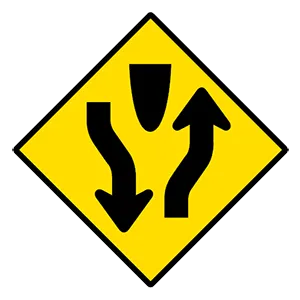
This sign indicates that a divided highway begins ahead. The road splits into two one-way roadways separated by a median or divider. You must keep to the right.
42 . When driving near a blind pedestrian who is carrying a white cane or using a guide dog, you should:
When driving near a blind pedestrian who is carrying a white cane or walking with a guide dog, you must slow down, yield the right-of-way, and then proceed with caution. Be prepared to stop your vehicle in order to prevent injury or danger to the pedestrian.
43 . At night, it is hardest to see:
Compared to signs and other roadside objects, pedestrians are hardest to see at night.
44 . Who is required by law to wear a seat belt while in a moving vehicle?
In the state of Indiana, all occupants of a vehicle that is equipped with seat belts must use the seat belts while the vehicle is in motion.
45 . When the driver behind you wants to pass, you should:
When the driver behind you wants to pass, you should slow down so that there is enough room in front of your vehicle for the other driver to complete their pass. This will allow them to complete the passing maneuver in less time and more easily.
46 . As a pedestrian, you should:
Pedestrians should not enter a street or crosswalk when vehicles are approaching. Though pedestrians have the right-of-way in crosswalks, a vehicle approaching from a close distance may not have the time to stop before entering the crosswalk.
47 . You are driving at night and another vehicle is approaching from the opposite direction. Your headlights:
Do not use your high beam headlights when approaching or following another vehicle at night. Switch to the low beam setting to ensure the safety of everyone on the road.
48 . A driver entering interstate traffic from an entrance or acceleration ramp:
If you are on an entrance or acceleration ramp and are entering interstate traffic, you should yield to drivers already on the interstate highway. Merge safely into traffic when you are able to do so.
49 . Your tire blows out while you are driving. You should:
If you experience a tire blowout, do not immediately apply the brakes. Grip the steering wheel firmly and steer to remain in your traffic lane. Reduce your speed gradually by releasing the accelerator and staying off the brakes. Once you are moving very slowly, apply the brakes lightly and pull off the road into a safe area.
50 . When driving near heavy trucks, other drivers and highway users must make allowances for:
When driving near heavy trucks, other drivers and highway users must make allowances for the increased stopping distance required by the large vehicles. Drivers of smaller vehicles should remain in locations where they can be seen by the driver of the large vehicle and where their view of traffic is not blocked by the vehicle.
See the exact questions that will be on the 2025 Indiana DMV exam.
99.2% of people who use the cheat sheet pass the FIRST TIME
LT gives us an insight on how the cheat sheet provided her with all the study questions she needed before taking her test.
Joe initially studied with the handbook and failed his test, he eventually found us online, studied and pass his test the first time around.
